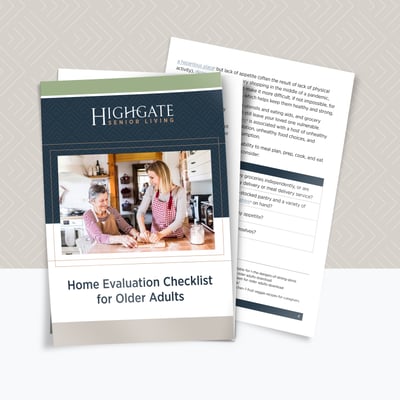As parents age, it’s normal to become concerned about their home safety – especially if your parent has experienced a change in their health. Over the years, you might have made improvements or accommodations to help them stay safe. You might be worried that these home safety upgrades and part-time caregiving aren’t enough.
Throw rugs, poor lighting, and stairs aren’t the only dangers to your parent’s safety. Loneliness, isolation, poor nutrition, limited activity, a lack of purpose — these, too, can compromise their ability to live their best life in old age.
The question you may be asking is, “how do you know when you should continue retrofitting your home to keep your loved one safe longer?” You may also be asking if it’s time to consider a move to an environment built to meet the needs of aging parents?
This home evaluation will help you answer the question: Should my parent continue living at home?
It will walk you through how to take a good look at all aspects of their present housing situation and how each one affects not only their safety but also their quality of life. Common home safety considerations that are covered include:
Meal preparation
Physical activity
Home management
Socialization and sense of purpose
Personal hygiene
Transportation
Medications and health status
Safety and mobility

